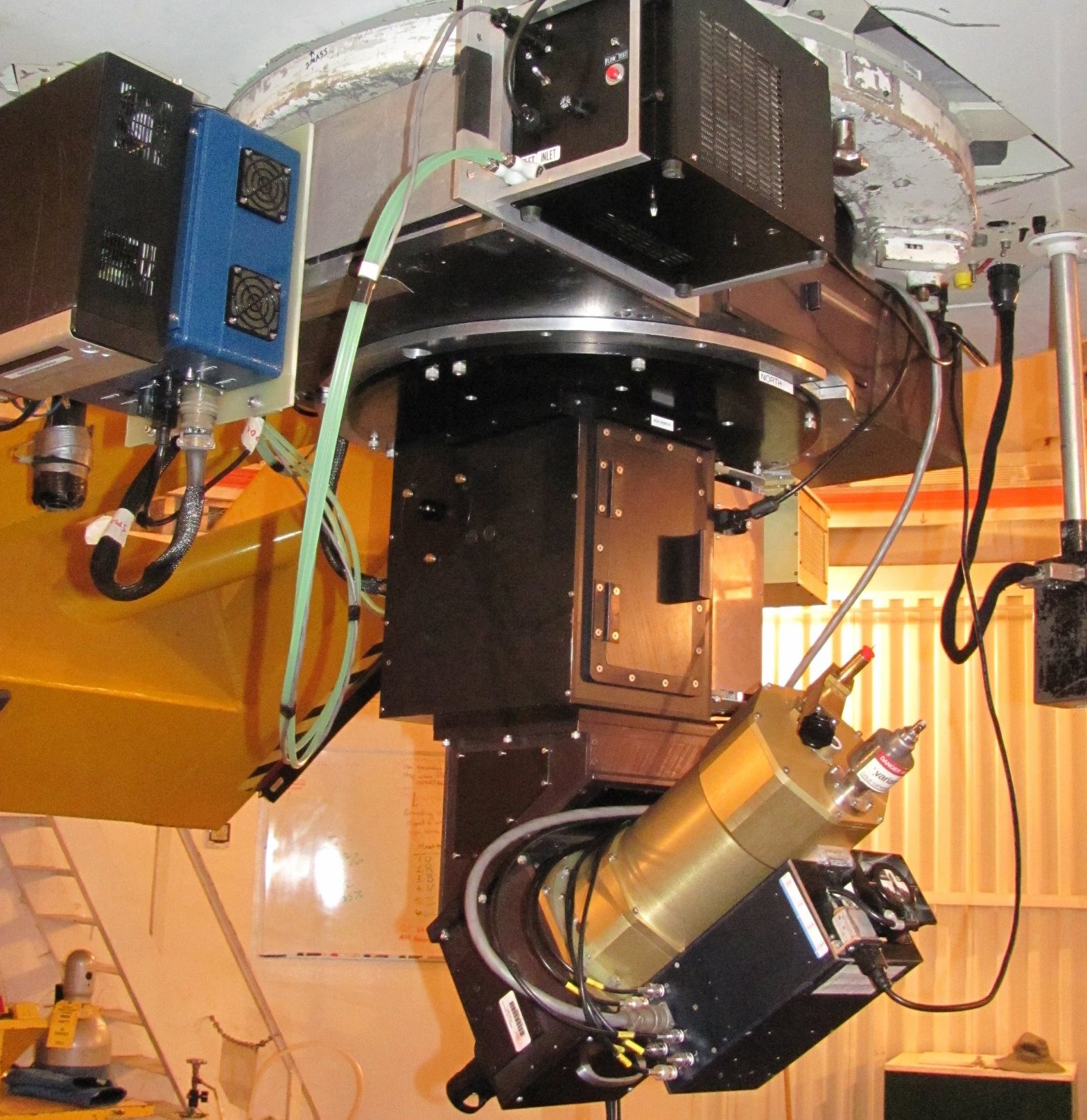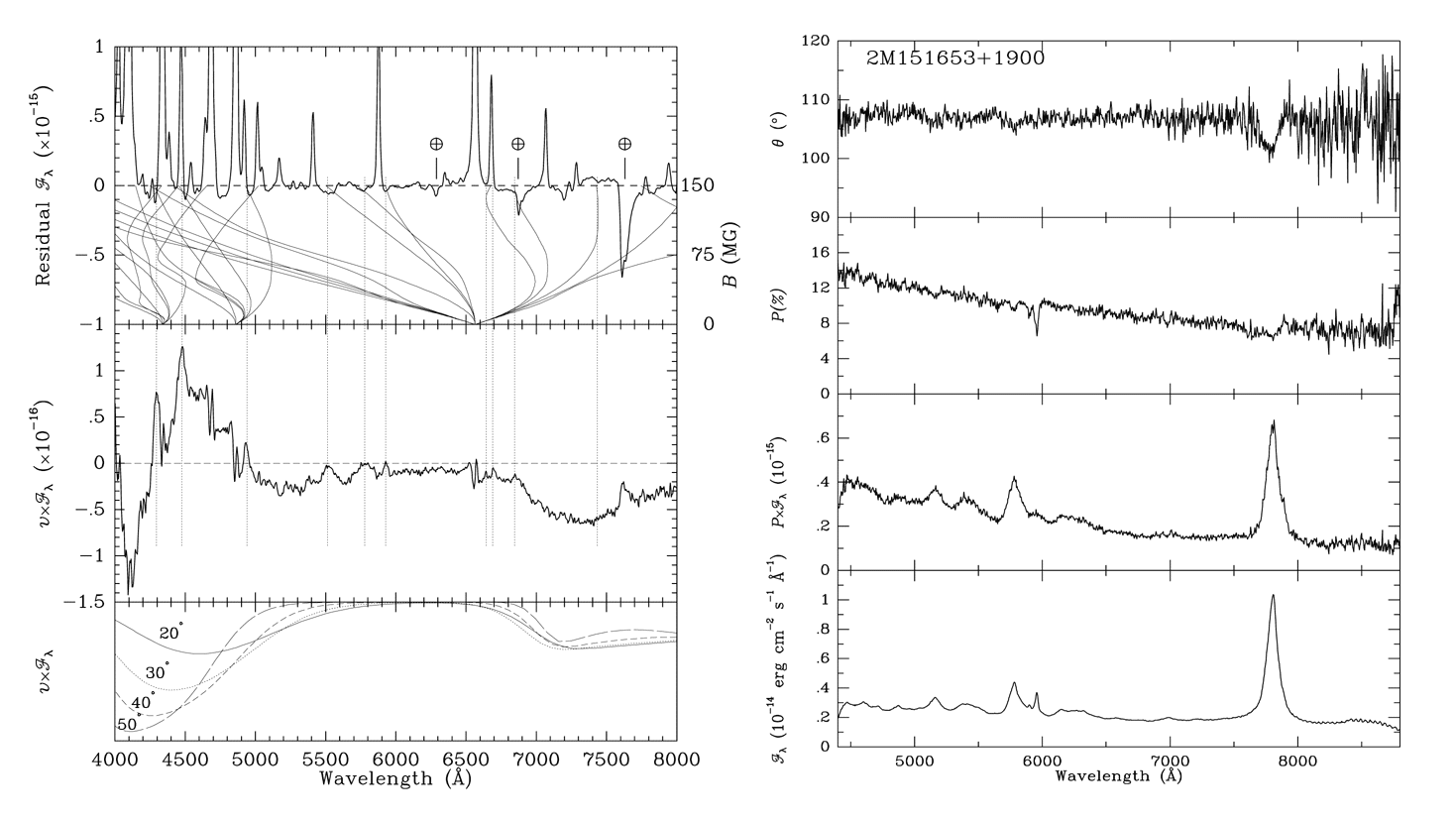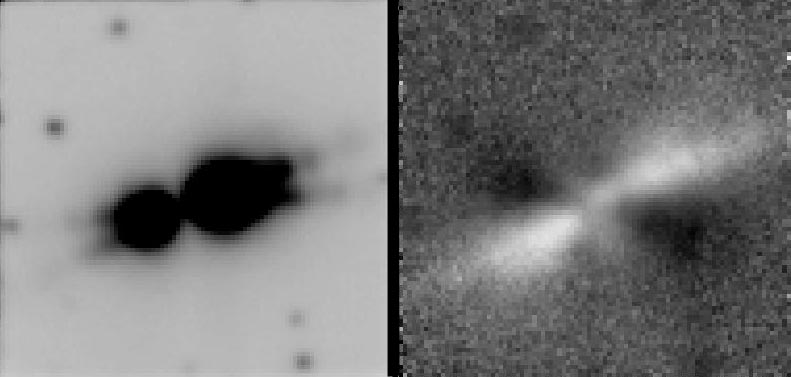SPOL CCD Imaging/Spectropolarimeter

 General
General
The CCD Imaging/Spectropolarimeter combines polarizing optics and a transmission-optics
spectrograph into a self-contained, portable, and high-throughput
instrument. It was designed and constructed in 1990-91 by Gary Schmidt and
H.S. Stockman (STScI). The polarimeter section is a dual-beam design that
incorporates rotating achromatic waveplates and a full-aperture Wollaston
prism. The detector is a cosmetically perfect 1200x800 pixel STA CCD with
quantum efficiency as high as 90%. With current gratings, spectral resolutions
of 4-15 Å are available over a range in useful spectral response of 3800-9000 Å.
The detection of linear or circular polarization at a level p <
0.05% is possible. In the imaging mode, polarization maps can be obtained
in filtered bandpasses at the seeing limit over a field of view 51" square
at the Steward Observatory 2.3-m and 1.54-m telescopes or 19" square at the MMT. The polarimeter is a standalone
instrument with a dedicated CCD, camera controller, instrument computer,
CCD guider,
and comparison lamp system. Optimized for an f/9 beam, CCD SPOL
can be mounted directly on the Steward Observatory 2.3-m and 1.54-m (pictured to the right) telescopes
or the
6.5-m converted MMT, and has been adapted for use at the 4-m Mayall telescope
on Kitt Peak, the now-destroyed 74" Mt. Stromlo reflector, and
the 1.9-m Perkins
telescope at Lowell Observatory.
CCD SPOL is a PI (Private-Investigator) instrument, available for use
through arrangement and collaboration with
Gary Schmidt
and Paul Smith.

Left: Total and circularly polarized flux spectra of
the 150MG magnetic cataclysmic variable V884 Her. The bottom panel
presents calculated cyclotron polarization spectra for various angles to
the magnetic field direction. The polarization peak around 7300A is
the cyclotron fundamental - the first time this has been seen from a white
dwarf. From Schmidt, Ferrario, Wickramasinghe, & Smith (2001)
Right: Total and linearly polarized flux spectra of the highly
polarized 2MASS QSO 2M151653+1900, showing a highly polarized spectrum in
total flux which lacks the narrow emission lines in scattered light.
From Smith, Schmidt, Hines, Cutri & Nelson (2000).

Left: Total flux image of CRL 2688. Right: "U" Stokes
image of CRL 2688, showing circularly-symmetric polarization position angle
indicative of scattering of light from a star located at the "waist" of
the nebulosity. Field of view is approximately 45 arcseconds square.
 Technical
Technical
This page created by Gary Schmidt (gschmidt@nsf.gov).
